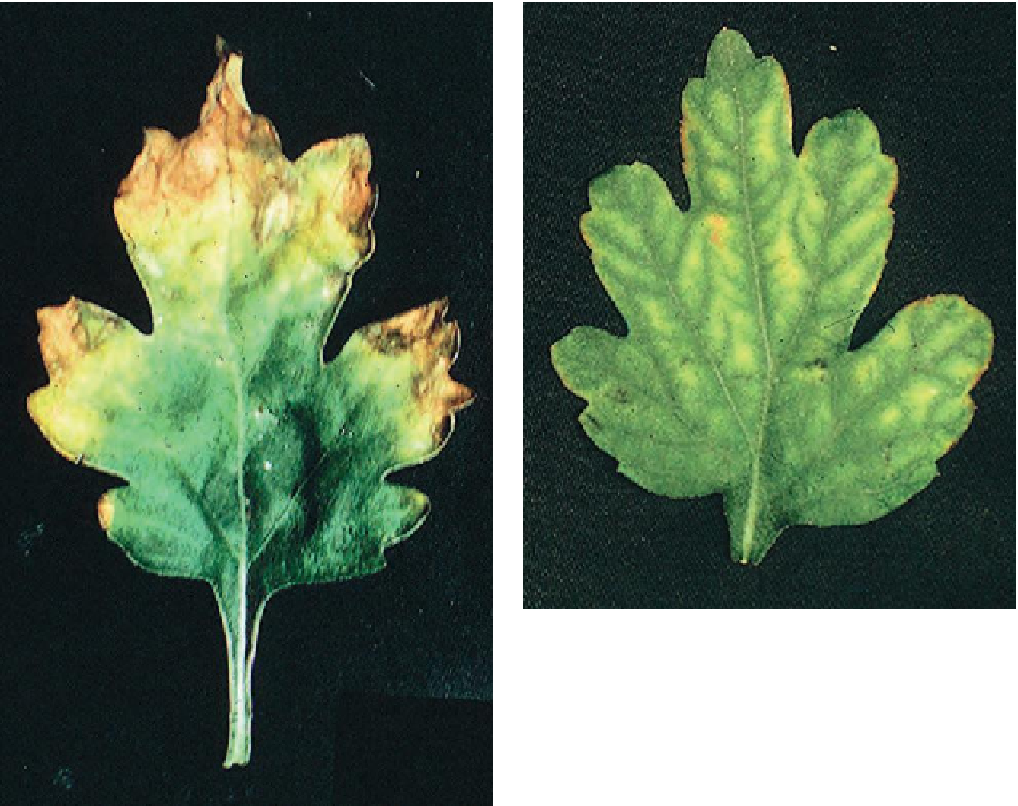Agriculture Reference
In-Depth Information
Figure 14.5
Magnesium defi ciency
Magnesium fertilizers
commonly used by gardeners
and their nutrient content are given in Table 14.2.
Calcium (Ca)
Calcium is a major constituent of plant cell walls as
calcium pectate, which holds the cells together after
cell division (see p. 81). It also influences the activity
of meristems, especially in root tips.
Deficiency symptoms tend to appear in the younger
tissues first because calcium is immobile in the plant.
It causes weakened cell walls, resulting in inward
curling, pale young leaves and sometimes death of the
growing point. Specific disorders include 'topple' in
tulips, when the flower head cannot be supported by
the top of the stem, 'blossom end rot' in tomato fruit
and 'bitter pit' in apple fruit (see p. 269).
In general, growing plants within their recommended
pH range ensures adequate calcium is available for
most plants (see lime p. 174).
Figure 14.4
Potash defi ciency
Potash fertilizers
(containing potassium) commonly
used by gardeners and their nutrient content are given
in Table 14.2.
Magnesium (Mg)
This has many roles in the plant, including being
required in large quantities to make chlorophyll (see
p. 112).
Mobile
in plant.
Deficiency symptoms appear as a characteristic
yellowing between the leaf veins (interveinal
chlorosis) appearing on the lower, older leaves
(Figure 14.5) because the inefficient old leaves
release magnesium from their chorophyll to build the
chlorophyll in the new young leaves. Consequently,
other than spoiling the look of a plant, the deficiency
has little or no effect on the performance. Continued
shortage leads to more of the leaves becoming
chlorotic and plant growth starts to be affected.
Gradually the affected areas become brown or
reddened.
Sulphur (S)
This is required by plants in large quantities but is
rarely in short supply. It is another nutrient needed
for the synthesis of proteins including chlorophyll
(see p. 000). Consequently, a deficiency produces
a yellowing (chlorosis) of leaves appearing in the
younger leaves first.

